This content originally appeared on HackerNoon and was authored by Precedent Publishing House
:::info Author:
(1) Anuar Assamidanov, Department of Economics, Claremont Graduate University, 150 E 10th St, Claremont, CA 91711. (Email: anuar.assamidanov@cgu.edu).
:::
Table of Links
Discussion and Conclusion, and References
A Appendix Tables and Figures
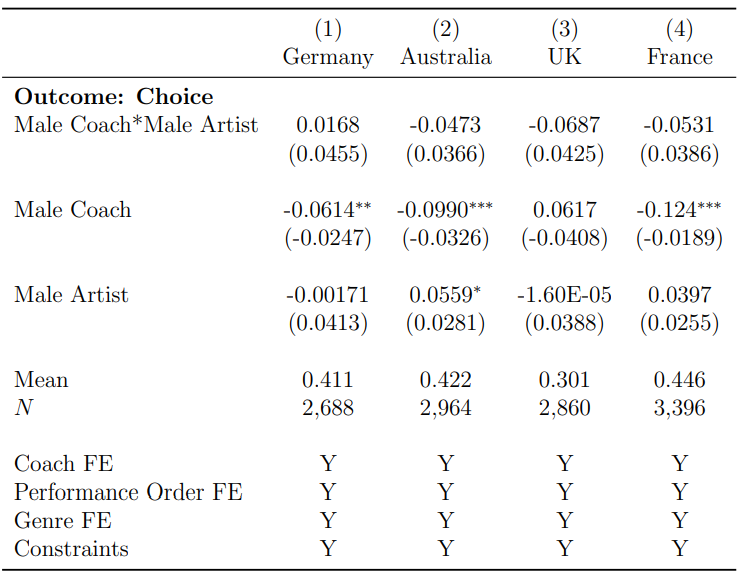
\ Notes: Table A1 presents a difference in differences estimate of gender bias using regression of Equation 1. This table reports the coefficient on the interaction of Male Artist and Male Coach from the regression of Choice on indicators for coach gender, artist gender, and the interaction term. The reported coefficients are for ”own-gender coach” using data subsets by country indicated in columns. Each specification includes coach and country fixed effects, the order of the performance fixed effects, genre-fixed effects, the number of males relative to females in the team, the failure rate of the coach for female artists, and the failure rate of the coach for male artists. Standard errors are clustered by coach. ∗ p < 0.1, ∗∗ p < 0.05, ∗∗∗ p < 0.01
\
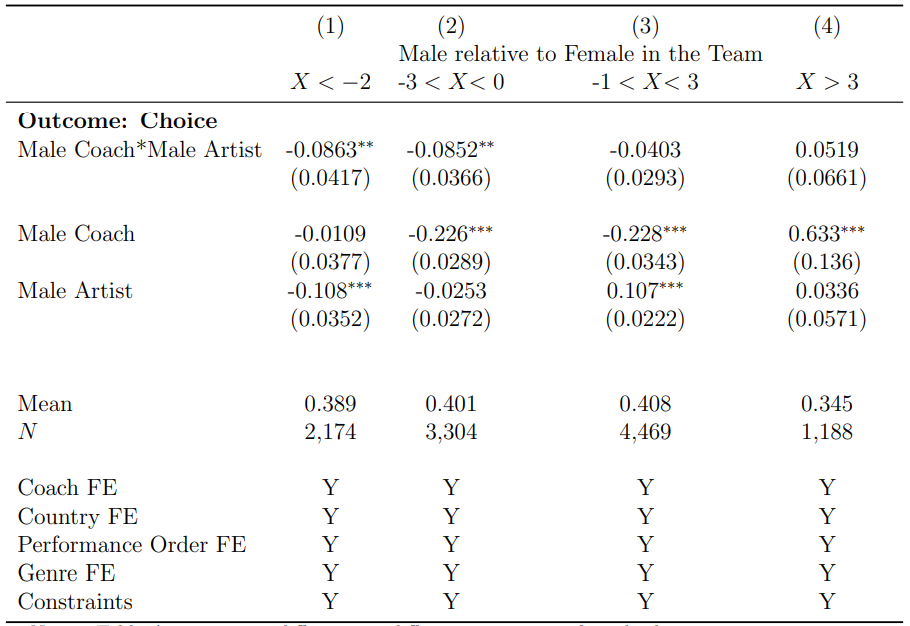
\ Notes: Table A2 presents a difference in differences estimate of gender bias using regression of Equation 1. This table reports the coefficient on the interaction of Male Artist and Male Coach from the regression of Choice on indicators for coach gender, artist gender, and the interaction term. The reported coefficients are for ”own-gender coach” using data subsets by gender composition in the team indicated in columns. X < −2 means that difference in the number of women and men in the team is 3 or higher. Similarly, X > 3 means that difference in the number of men and women is 4 or higher. Each specification includes coach and country fixed effects, the order of the performance fixed effects, genre-fixed effects, the failure rate of the coach for female artists, and the failure rate of the coach for male artists. Standard errors are clustered by coach. ∗ p < 0.1, ∗∗ p < 0.05, ∗∗∗ p < 0.01
\
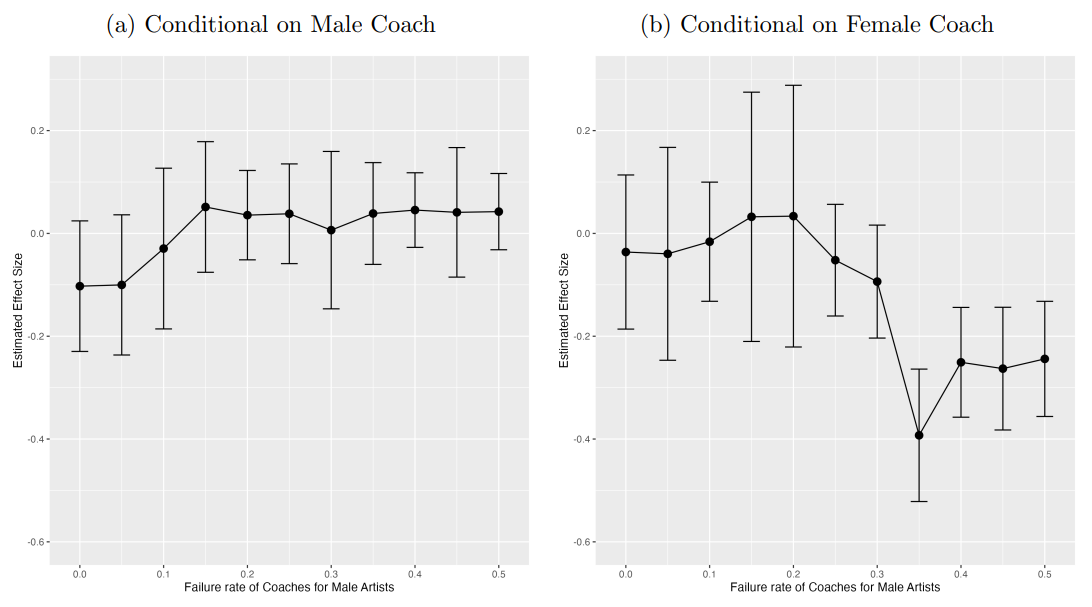
\ This figure summarizes the results from the causal forest by approach in Athey and Wager (2019), where each estimate shown represents the effect of own-gender and opposite-gender interactions on selecting the artists in the case controlling for the gender of the coach and coach fixed effects. From left to right, the outcome of interest is a set of indicators for the failure rate of coaches for male artists. This is the rate at which a coach wanted an artist of a particular gender on their team, and the artist did not choose the coach. This result effectively yields the estimates of own and opposite gender bias in selections that are specific to variation by the failure rate of coaches for male artists. Standard errors clustered by coach.
\
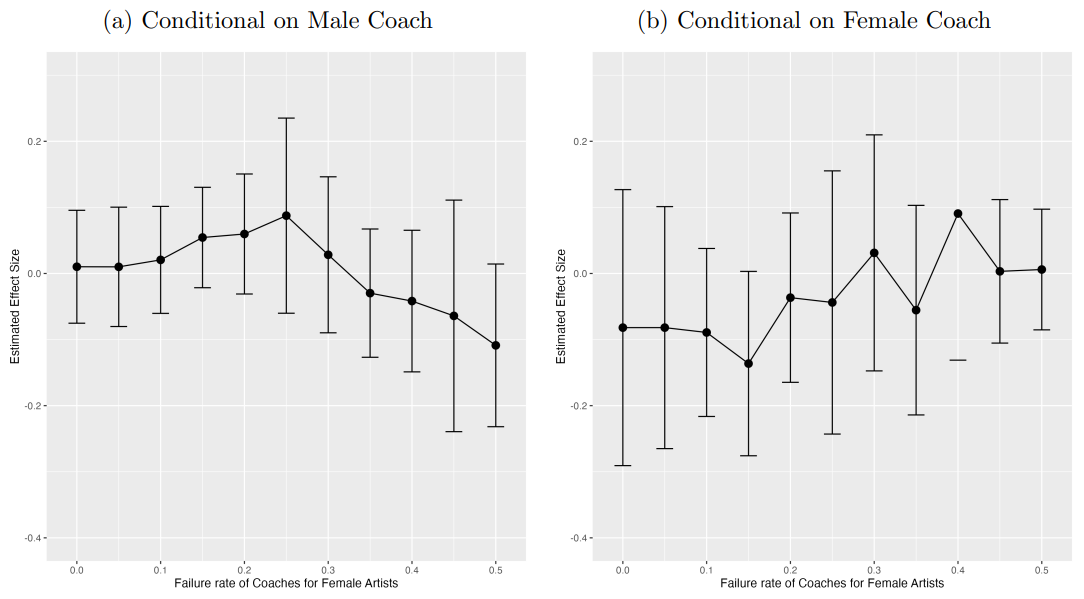
\ This figure summarizes the results from the causal forest by approach in Athey and Wager (2019), where each estimate shown represents the effect of own-gender and opposite-gender interactions on selecting the artists in the case controlling for the gender of the coach and coach fixed effects. From left to right, the outcome of interest is a set of indicators for the failure rate of coaches for female artists. This is the rate at which a coach wanted an artist of a particular gender on their team, and the artist did not choose the coach. This result effectively yields the estimates of own and opposite gender bias in selections that are specific to variation by the failure rate of coaches for female artists. Standard errors clustered by coach.
\
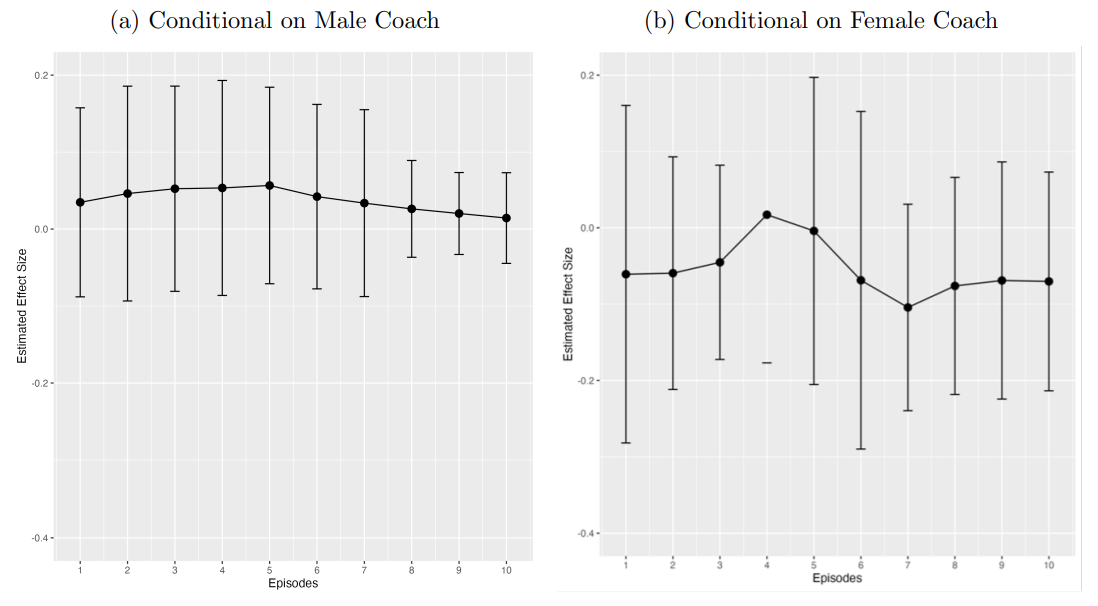
\ This figure summarizes the results from the causal forest by approach in Athey and Wager (2019), where each estimate shown represents the effect of own-gender and opposite-gender interactions on selecting the artists in the case controlling for the gender of the coach and coach fixed effects. From left to right, the outcome of interest is a set of indicators for each audition episode. Each 10th order of ten performances aggregates into the episodes in the same order. This result effectively yields the estimates of own and opposite gender bias in selections that are specific to variation by the grouped order of performance. Standard errors clustered by coach.
\
:::info This paper is available on arxiv under CC 4.0 license.
:::
\
This content originally appeared on HackerNoon and was authored by Precedent Publishing House
Precedent Publishing House | Sciencx (2024-06-30T22:10:14+00:00) Exploring Own-Gender Bias in Talent Selections. Retrieved from https://www.scien.cx/2024/06/30/exploring-own-gender-bias-in-talent-selections/
Please log in to upload a file.
There are no updates yet.
Click the Upload button above to add an update.
